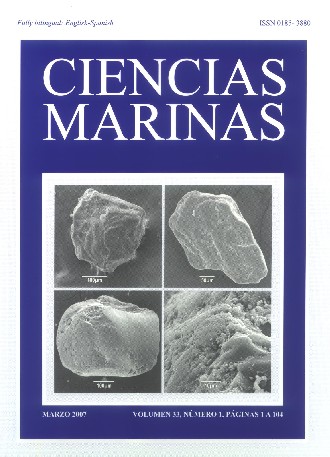Scanning electron microscopy analysis of quartz grains in desert and coastal dune sands (Altar Desert, NW Mexico)
Main Article Content
Abstract
A scanning electron microscopy analysis was performed for 570 quartz grains from desert and coastal dune sands in NW Mexico. Our main goal is to present a new application in the use of ternary diagrams with logistic normal confidence region boundaries of normalized data based on quartz surface textures (i.e., constrained data) of desert and coastal dune sands. This was done to demonstrate that quartz surface textures from desert and coastal dune sands are not significantly different even though there are apparent dominant processes (mechanical, chemical) that produce different surface textures in quartz grains from both dune types. This may be associated with the fact that quartz grains deposited in the dune sands do not reflect a second cycle of transport associated with an aeolian environment because of their low textural maturity, provenance, closeness to the source rock, and little attrition process. This study indicates that quartz grains from the desert dunes display mechanical textures probably associated with the Colorado River Delta and granitic sources that do not reflect accurately the aeolian mechanisms controlling the transport of these grains. Also, some quartz grains display chemical surface textures probably linked to the hydrothermal activity near the Colorado River Delta. In general, quartz grains display conspicuous surface textures. Quartz from coastal dune sands displays chemical surface textures that indicate quartz precipitation from silica-saturated water and, to a lesser extent, it displays mechanical features. These similarities might be associated with the mixing of processes (mechanical, chemical ) in quartz from the desert and coastal dune sands.
Downloads
Article Details
This is an open access article distributed under a Creative Commons Attribution 4.0 License, which allows you to share and adapt the work, as long as you give appropriate credit to the original author(s) and the source, provide a link to the Creative Commons license, and indicate if changes were made. Figures, tables and other elements in the article are included in the article’s CC BY 4.0 license, unless otherwise indicated. The journal title is protected by copyrights and not subject to this license. Full license deed can be viewed here.

